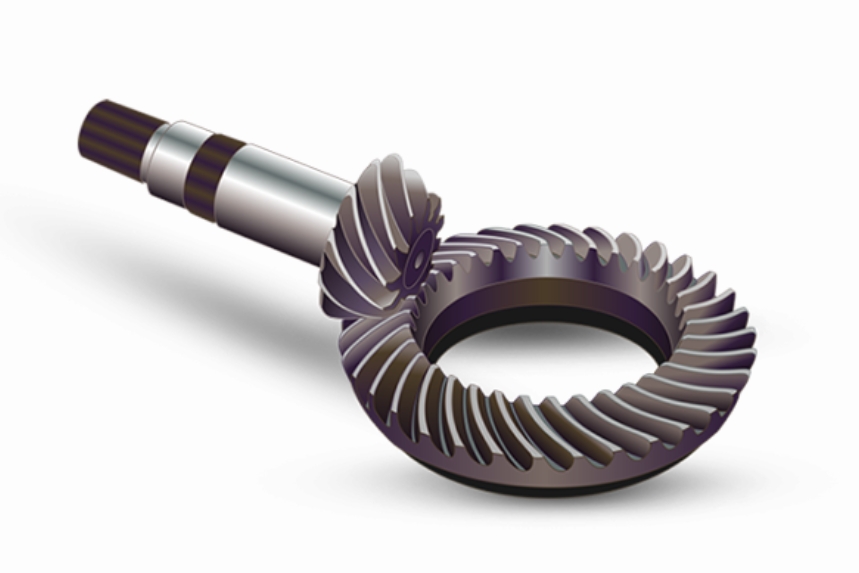
Optimizing spiral bevel gear designs to improve energy efficiency involves several key strategies. These strategies are aimed at minimizing losses due to friction, wear, and deformation, while maximizing the transfer of power through spiral bevel gear. This not only enhances the efficiency of spiral bevel gear themselves but also contributes to the overall energy efficiency of the systems in which they are used. Here’s how these optimizations can be approached:
1. Material Selection
- Lightweight Materials: Using materials with high strength-to-weight ratios, such as advanced aluminum alloys, titanium, or composites, can reduce the overall mass of the gear system, leading to lower inertia and less energy required to move spiral bevel gear.
- High-Strength Alloys: Materials that can withstand higher loads and stresses can be machined to thinner, more efficient profiles without compromising their structural integrity, thereby reducing drag and improving efficiency.
2. Tooth Geometry Optimization
- Tooth Profile Modification: Modifying the tooth profile to ensure more uniform stress distribution and minimize peak stresses can reduce the likelihood of spiral bevel gear slippage and misalignment, which are common sources of energy loss.
- Helix Angle Adjustment: Optimizing the helix angle can improve the contact ratio and smoothness of the engagement between spiral bevel gear, reducing vibration and noise, which are indicators of energy inefficiency.
3. Surface Treatments
- Surface Coatings: Applying advanced coatings such as diamond-like carbon (DLC) or ceramic-based materials can reduce friction between the tooth surfaces, significantly enhancing efficiency and durability.
- Surface Finish Improvements: Employing precision finishing techniques, such as isotropic superfinishing, can reduce surface roughness, leading to lower friction and improved efficiency.
4. Lubrication Systems
- Advanced Lubricants: Using synthetic or bio-based lubricants that provide superior lubricity and film strength can decrease friction losses significantly.
- Lubrication Delivery Optimization: Designing spiral bevel gear housings and channels that ensure optimal lubricant flow and coverage can prevent overheating and excess wear, both of which detract from system efficiency.
5. Heat Treatment Processes
- Carburizing and Nitriding: These processes can enhance the hardness and fatigue resistance of spiral bevel gear surfaces, allowing them to maintain optimal geometry under load and over time, thereby ensuring consistent efficiency.
- Cryogenic Treatments: Treating spiral bevel gear at cryogenic temperatures can refine their microstructure, leading to reduced residual stresses and improved dimensional stability, which helps maintain efficient spiral bevel gear meshing.
6. Integration of Advanced Technologies
- Additive Manufacturing: Utilizing 3D printing for spiral bevel gear production can allow for the creation of complex, optimized shapes that traditional manufacturing methods cannot achieve. This can include lightweight structures or integrated cooling channels that enhance performance.
- Computer-Aided Engineering (CAE): Using advanced simulation tools to predict how spiral bevel gear designs will perform under actual operating conditions can help engineers refine designs before they are manufactured, optimizing efficiency.
7. Testing and Validation
- Prototyping and Testing: Developing prototypes and subjecting them to rigorous testing under controlled conditions can help identify inefficiencies and areas for improvement in spiral bevel gear designs.
- Feedback Loops: Implementing feedback mechanisms from testing back into the design process ensures continuous improvement and helps achieve higher efficiencies in spiral bevel gear systems.
By focusing on these areas, manufacturers can significantly enhance the energy efficiency of spiral bevel gear. This not only leads to reduced operational costs but also contributes to the sustainability goals of reducing energy consumption and emissions in industries such as automotive and aerospace.
